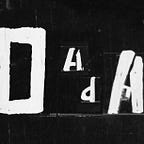Introducing The Invisible Economy
The Invisible Economy is the radical separation of art and the market. Blockchain technology allows the economy to be both invisible and transparent.
Part 1 of 12.
By Beatriz Ramos and Yehudit Mam
Summary
Art today is both an elitist and an unsustainable occupation. Less than 1% of artists can make a living off their work. Free markets prevent art from thriving. The financialization of art has reduced it to an instrument for the rich to store and transfer wealth. In today’s market, the democratization of art is just a euphemism for its commodification.
Decentralization and blockchain have enormous potential for progress in this field but blockchain won’t bring about meaningful change as long as it relies on traditional market ideologies. In the last decades, we have seen enormous technological innovation but there has been little innovation in terms of new economic visions.
The Invisible Economy is the radical separation of art and the market. Blockchain technology allows the economy to be both invisible and transparent. It is invisible because it separates artmaking, code writing, art collecting, and general contributions from market transactions through different mechanisms. And it is transparent because all the transactions take place on the Ethereum blockchain where everyone can track them.
Blockchain allows peer-to-peer networks to launch their own currency, and to control and self-manage the value they create collectively without a central authority. The Invisible Economy organizes economic activity based on interdependence, creativity, and altruism. It leverages the wisdom of the crowd without the pernicious effects of the market. Ultimately, people are rewarded for their contributions with a basic income.
DADA is an online platform where people around the world create spontaneous visual conversations together, in spite of language, distance, nationality, or other artificial boundaries. On DADA, art is a means of communication, and its creative and collaborative nature fosters strong bonds between people. It’s a free and liberating experience. Trolling and bullying are organically neutralized. It is a place where strangers make art together without expecting remuneration, motivated not by extrinsic rewards like money or status but by intrinsic rewards such as the joy of making art, and a sense of autonomy, validation, self-development, belonging and a higher purpose.
We believe that DADA can be self-sustaining without relying on donations or traditional business models. But in order to preserve people’s intrinsic motivations and the collective social norms that make it such a creative place, the economy must be invisible. In practice, this means that there won’t be a shopping cart icon above each drawing or a leaderboard with the top-selling artists. Artists won’t get to decide a price for their art, bidders won’t compete against each other, bids and purchase prices will be only visible to the person who decides them, and there will never be a direct correlation between the art the artists make and the basic income they receive. Paradoxically, giving up these individual decisions will give people true autonomy.
DADA is a platform with a unique value proposition, a passionate community, and the largest collection of rare digital art in the world — 120,000 digital artworks ready to be traded as NFTs, created by our community with our tools. We believe in the free use of art, but not if people profit from an artists’ work without remuneration.
Since these digital artworks are created with our tools, we will build new tools for the use, remix, animation, musicalization or adding text on top of any digital artwork in our platform. Each new iteration will be an NFT, allowing us to track every contribution, paving the way for exponential co-creation, and for art to evolve in unexpected ways.
The DADA token, our new currency, is backed by our art collection, and the Invisible Economy uses tokenized drawings (NFTs) as the medium of exchange.
We will present the full paper at the Radical X Change on June 20 and will be publishing it in installments here leading up to the conference. In the meantime, we’d love to hear your thoughts. Share your comments here.
Part 2: DADA’s Invisible Economy
Index
4. Basic Income
5. Validation
6. Autonomy
10. Interdependence
11. The Commons
12. Art As Currency
